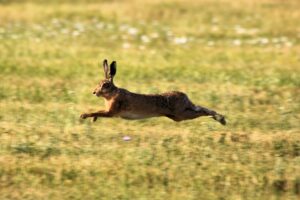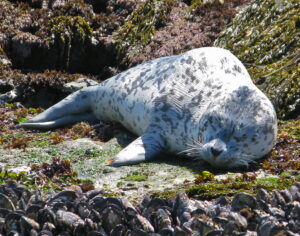Home University of Edinburgh Library Essentials
July 26, 2024
Witches and Animals in the School of Scottish Studies Sound Archives
Posted on October 31, 2023 | in School of Scottish Studies Archive, SSSA, Uncategorized, Volunteers | by lbeattieNicole Deacon is a volunteer in the Civic Engagement Team. As someone who has always been interested in all things witches, witch trials and witchcraft since she was very young, this was a topic that she was drawn to when she was first started volunteering with us and researching stories in the university’s archives at the age of sixteen. Nicole wanted to educate people about the role witches and folklore played in our history. We thought today being Hallowe’en would be a good day to share some of the results of that research with you.
When I first started looking into ideas about witches in the archives, I found that there are two main sources with a lot of information: the Tobar an Dualchais website which contains many sound recordings from the School of Scottish Studies Archives (as well as The Canna Collection and BBC Radio Gàidheal) and the Carmicheal Watson Collection. Both of these sources give us a great insight into Scotland’s rich history of folklore.
One thing that I noticed about many of the stories I came across was the connection between witches or witchcraft and animals. In this blog post, I’d like to share some examples of stories which feature this this connection by telling us about witches who change shape into animals or beings who can shapeshift between animal and human such as Selkies and Kelpies.

Story about a witch transforming herself into a hare, Nan Marshall (Contributor), Dr Emily Lyle (Fieldworker), ref. SA1974.171.B9, School of Scottish Studies Archives, University of Edinburgh
An Eighteenth Century Witch Trial Following a Plague of Cats, Donald Grant (Contributor), Prof. Tadaaki Miyake (Fieldworker), ref. SA1972.240.B5 , School of Scottish Studies Archives, University of Edinburgh
A Shape Shifting Witch Met her End, Donald Grant (Contributor), Prof. Tadaaki Miyake (Fieldworker), ref. SA1972.241.B6, School of Scottish Studies Archive, University of Edinburgh
Selkies

Image taken from: Baby Harbor Seal | Openverse
In Northern Scotland, you may hear stories about a water creature called the selkie. Selkies are often, although not exclusively, women reflected in the fact that in Gaelic stories, the word for mermaids and for selkies is the same: maighdeannn-mhara or ‘the maiden of the sea’.[3]
When they are in the sea, selkies live as a seals but on land they transform into women by taking their seal skin off. To go back to their true form, they must put their seal skin back on. Often selkies are trapped by men who steal their seal skins, forcing them to live on land as a human women. Selkies are said to be good wives but very sad. Sometimes in the stories, they give birth to children but if they recovers their skin, they will leave them to return to the ocean. According to the tales, male selkies are very handsome in human form and women find them very seductive. Male selkies will seek out unhappy wives of fishermen who wait for their husband to return.
There are several stories about selkies in the School of Scottish Studies sound archives. One story that takes place on Hallowe’en features a young man who travels to an island where he had heard there were many selkies congregating in a cave. He watches them as they strip off their skins and turn into men and women. They hid their skins while they dance and sing and the young man takes the opportunity to steal the skin of a seal girl he is attracted to. As a result, she is left behind after the dance and marries the man who stole her skin. Many years later her son finds the skin and gives it back to her. She returns to the sea and after that her children would often spot a particularly pretty seal in the waves who would wave to them.
A young man watched the selkies dance, Brucie Henderson (Contributor), Alan Bruford (Fieldworker), ref. SA1970.243, School of Scottish Studies Archive, University of Edinburgh

A Traveller who was pearl-fishing was nearly caught by a kelpie., Stanley Robertson (Contributor), Barbara McDermitt (Fieldworker), ref. SA1981.23.3, School of Scottish Studies Archive, University of Edinburgh.
These are only some of the examples that I came across. Listening to, and reading, these stories gives us an insight into these women and creature’s lives. Was their shapeshifting a way for them to escape blame, to avoid danger or was it for others to cast them as scapegoats?Although many people may not believe in witches or the kelpies, I believe there’s got to be some truth in the stories and legends that are all over the world.
If you want to read more about the different Hallowe’en customs recorded in the School of Scottish Studies Archives, you can read this blog post here which talks about many different customs from burning hazelnuts to reading eggs.
[4] Scottish Mythical Creatures – Kelpies, Selkies, and More (twinkl.co.uk)
[5] Why Are Kelpies So Feared and Distrusted in Scottish Folklore? (icysedgwick.com)
Collections
 Archival Provenance Project: Emily’s finds
My name is Emily, and I’m the second of the two archive interns that...
Archival Provenance Project: Emily’s finds
My name is Emily, and I’m the second of the two archive interns that...
 Archival Provenance Project: a glimpse into the university’s history through some of its oldest manuscripts
My name is Madeleine Reynolds, a fourth year PhD candidate in History of Art....
Archival Provenance Project: a glimpse into the university’s history through some of its oldest manuscripts
My name is Madeleine Reynolds, a fourth year PhD candidate in History of Art....
Projects
 Sustainable Exhibition Making: Recyclable Book Cradles
In this post, our Technician, Robyn Rogers, discusses the recyclable book cradles she has developed...
Sustainable Exhibition Making: Recyclable Book Cradles
In this post, our Technician, Robyn Rogers, discusses the recyclable book cradles she has developed...
 Giving Decorated Paper a Home … Rehousing Books and Paper Bindings
In the first post of this two part series, our Collection Care Technician, Robyn Rogers,...
Giving Decorated Paper a Home … Rehousing Books and Paper Bindings
In the first post of this two part series, our Collection Care Technician, Robyn Rogers,...
